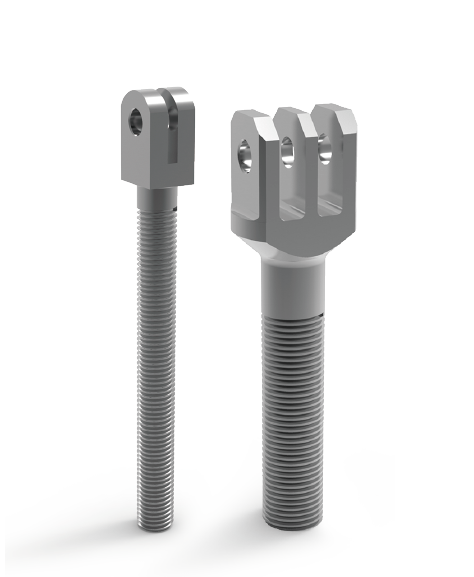Chain anchor bolts – also known as leaf chain anchors or clevises – are considered a critical component. They join the chain to the mast and help support the load.
A forklift has two chain anchor bolts to balance the load on the mast, and should be stronger than the leaf chain to which they are attached.
CHAIN ANCHOR BOLT MATERIAL SELECTION & PRODUCTION
Chain anchor bolts are made from heat treated, high-tensile strength alloy steel.
The load goes through the entire chain anchor bolt. Contact between the pin and the anchor bolt is vital to the mast operation, so the holes must be precisely manufactured. The thread must have a proof load and engagement greater than that of the chain.
Each clevis from CCTY is designed per application, so it operates within the defined stresses and required strength.
ENSURING A LONG SERVICE LIFE
Leaf chain anchors do not move, so there is very little wear on the component. Rust can cause it to deteriorate over time, so using a surface coating will help to maintain the projected service life.
The pin that secures the leaf chain to the anchor bolt may need to be replaced due to damage from extended exposure to vibration.
FREQUENTLY ASKED QUESTOINS ABOUT LEAF CHIAN ANCHORS
Aside from forklifts, where are chain anchor bolts found?
Telehandlers, hoists and lifts also use chain anchor bolts.
What surface coatings are available on chain anchor bolts?
Zinc nickel plating, zinc and phosphate coatings help to prevent rust.
What are signs that the chain anchor bolt needs to be replaced?
As long as the bolt remains rust free, it should last the life of the forklift.
Why do some clevises have one opening on the head and others have multiple?
The slots in the bolts correlate to the number of leaf chains used to lift the mast. A forklift designed for heavy loads will use more than one chain, so it requires slots for each one. A single chain application only requires one slot.

